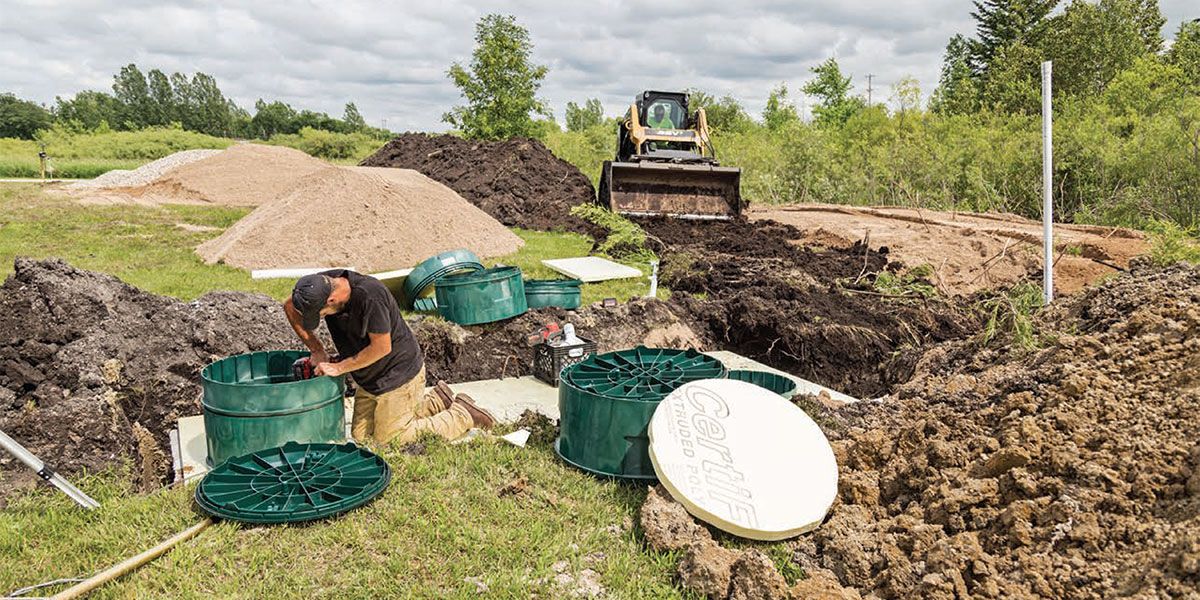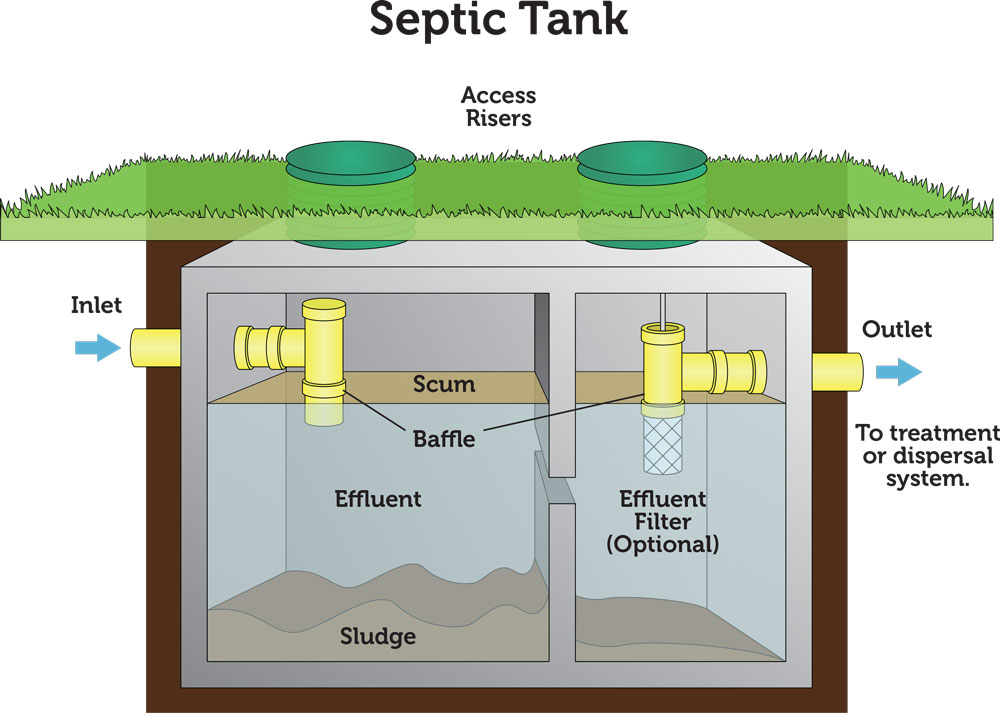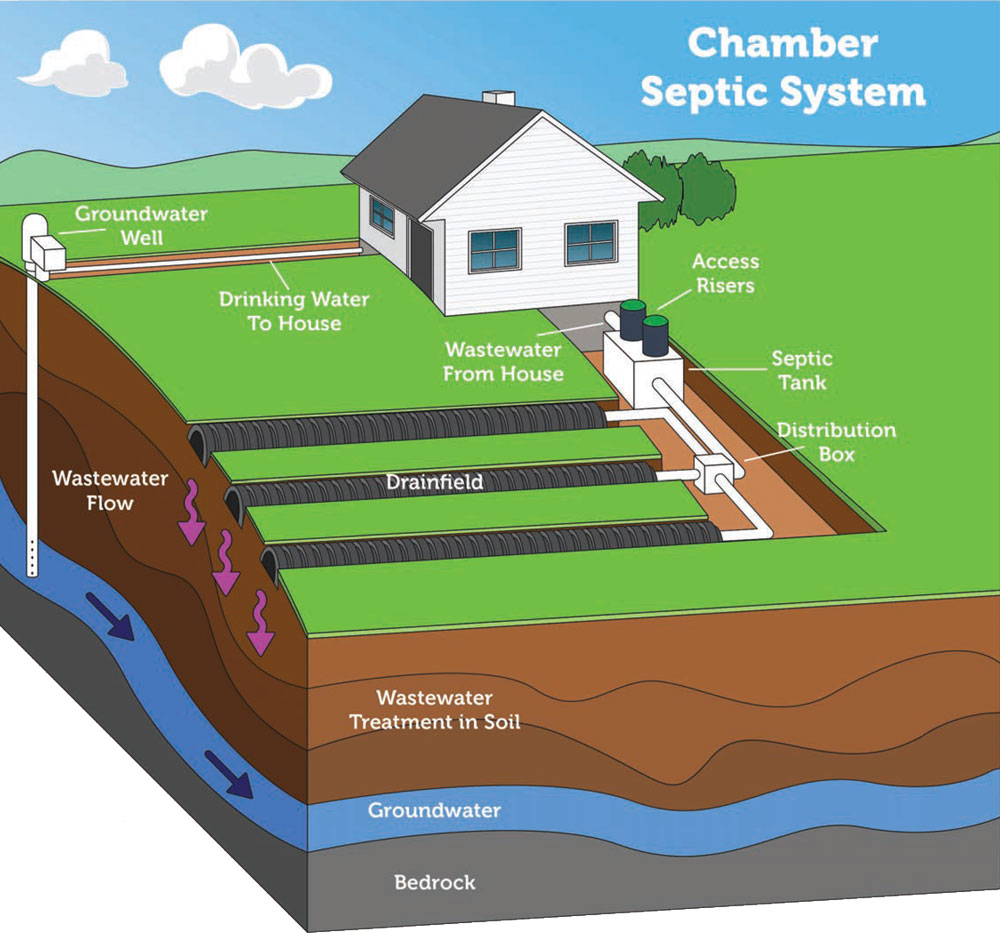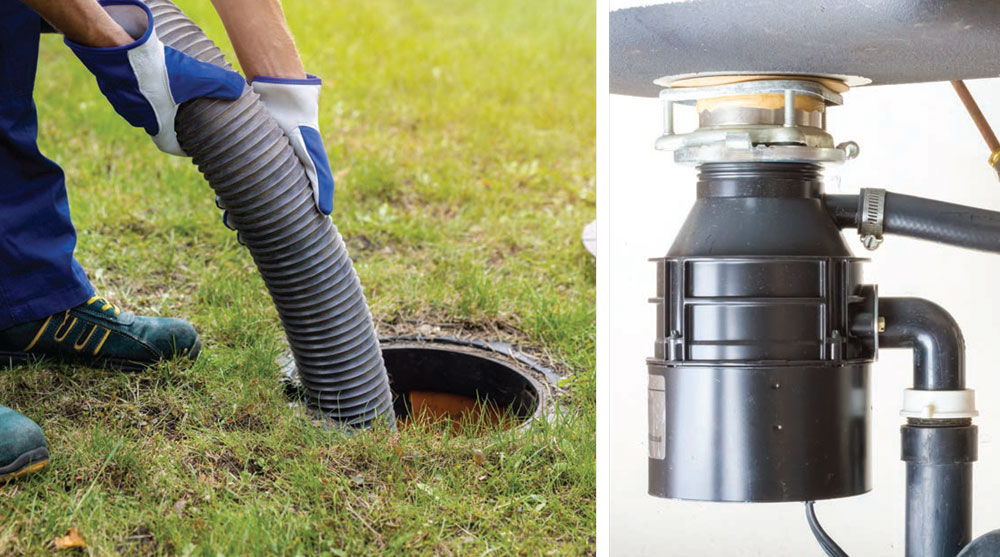Septic Systems 101

AVOID COSTLY MISTAKES WITH CARE & MAINTENANCE
Septic system, sewage disposal system, country plumbing: these titles conjure images of mysterious superstitions and a host of misinformation that suggest maintaining a home in the country is daunting. Actually, septic systems are simple and effective. All it takes is a bit of knowledge and a punctual routine of minimal maintenance.
 Please note: The number of compartments in a septic tank vary by state and region.
Please note: The number of compartments in a septic tank vary by state and region.
GRAPHIC: ENVIRONMENTAL PROTECTION AGENCY
How septic systems work
A septic system is designed to take used water from a home’s kitchen, baths and laundry outside and filter it so the water can drain back into the ground. Using gravity, the wastewater runs through the home’s pipes into a holding tank where bacteria aid in the breakdown of debris or solids. The solids settle to the bottom of the tank, the fats and oils rise to the top and the filtered water layer in the middle runs through pipes into the drain field. Over time, the solids in the septic tank fill and must be pumped out by a septic tank contractor.

Please note: Septic systems vary. Diagram is not to scale.
GRAPHIC: ENVIRONMENTAL PROTECTION AGENCY
A drain field is an area of the yard that is near the septic tank. It is comprised of pipes with holes in them. The pipes are buried in gravel then covered with a layer of dirt. On top of the dirt, grass grows so it appears to be a nice green lawn. Underneath, your plumbing system is hard at work.
What are the basic practices?
Older systems (installed before 1972) are very simple: They work with gravity to carry the wastewater out of the house and downhill to the drain field. These systems usually have cast iron pipes, which last 75 years in residential use. However, cast iron pipes oxidize over time and produce sulfuric acid, which gradually corrodes the inside of the pipes and adds to the liquid ash mat on the surface of the tank.
While not a negative, this does mean older systems should be pumped more frequently. Bill Hall of Hall’s Septic recommends pumping systems installed before 1972 every three to five years. This variation depends upon the number of people using the plumbing system in the home. A benefit of cast iron pipes is that they are quiet. When water runs through the pipes inside the house, there is not the whooshing sound that plastic pipes make.
Newer systems (installed after 1972) are slightly more complicated because they use plastic pipes and often use a pump rather than gravity to run the wastewater to the drain field. A benefit of a newer system using a pump is it allows the drain field to be above the house. Since the wastewater is pumped to the drain field, a home can be sited on a smaller or a hilly lot and still use a septic system.
Before installing a septic system, the soil is tested and land has to “perc” to qualify for a septic system. A perc (percolation) test reveals if the soil conditions will absorb a certain amount of water in a specific time period. Hall explains, “these days there are even more complicated systems called ‘alternate systems’ for land that does not perc. These systems require special contractors to install them and involve an operator who comes periodically for maintenance and to check if the system is working properly.”
Most new systems contain plastic pipes (PCV). “Plastic did away with the majority of problems,” Bill explains. Plastic pipes do not deteriorate. With PCV piping and a newer system, a septic tank can go 7 to 10 years before it fills and needs pumping.
How do you maintain a healthy system?
For both new and old septic systems, make sure nothing goes down the pipes that is not biodegradable. As Hall says, “it is very simple. It is not what you put in a septic system; it is what you don’t put in them.” He adds, “there is no need to pour any chemicals or additives down the drain. We put the bacteria in there from our bodies. That bacterium works with the wastewater to break down the solids and fats that go down the drain.”
Can you have a garbage disposal?
Yes, if everything that goes into the disposal is biodegradable. It is not advisable to pour oil and grease down the sink. If you do, using a product like Rid-X may be a good idea. It naturally adds extra bacteria to the septic system to break down the grease.
What size septic tank should I have?
Hall says, “The rule of thumb is a 1,000-gallon tank is used for a standard two-to-three-bedroom house. If you have a garbage disposal, a slightly larger tank is recommended and for four to five bedrooms, a 1,500-gallon tank is necessary.”
Septic systems are effective and straightforward if used properly. They are good for the environment — they remove the pollution from wastewater and don’t require municipalities to build large sewage treatment facilities. Septic systems are easy, environmentally friendly and a solution to clean living. A bonus benefit: it offers a healthy green lawn over the drain field — perfect space for a putting green, croquet or badminton. ✦
Things to remember
- Watch for leaky faucets or toilets and repair them right away – these pour perfectly good water into your tank and fill it faster.
- Do not use a lot of bleach for cleaning or antibacterial soap – these residues go down the drain and kill the good bacteria in the tank that clean the waste.
- Pump the tank according to schedule.
- Do not pour or flush anything that isn’t biodegradable down the drain. Chemicals, leftover paint and feminine products are a big NO.
country plumbing, drain field, percolations, Septic system, sewage disposal system, wastewater







